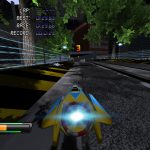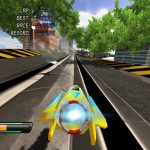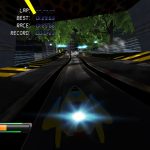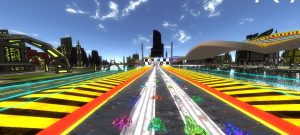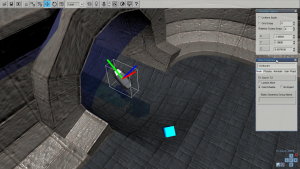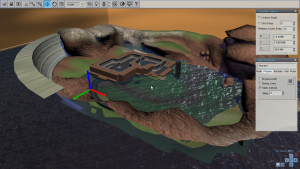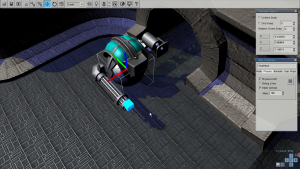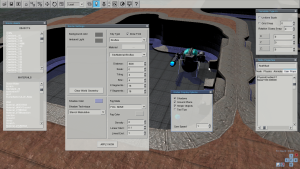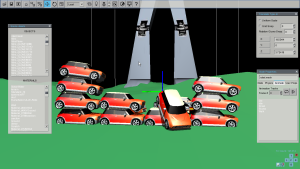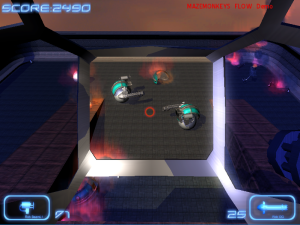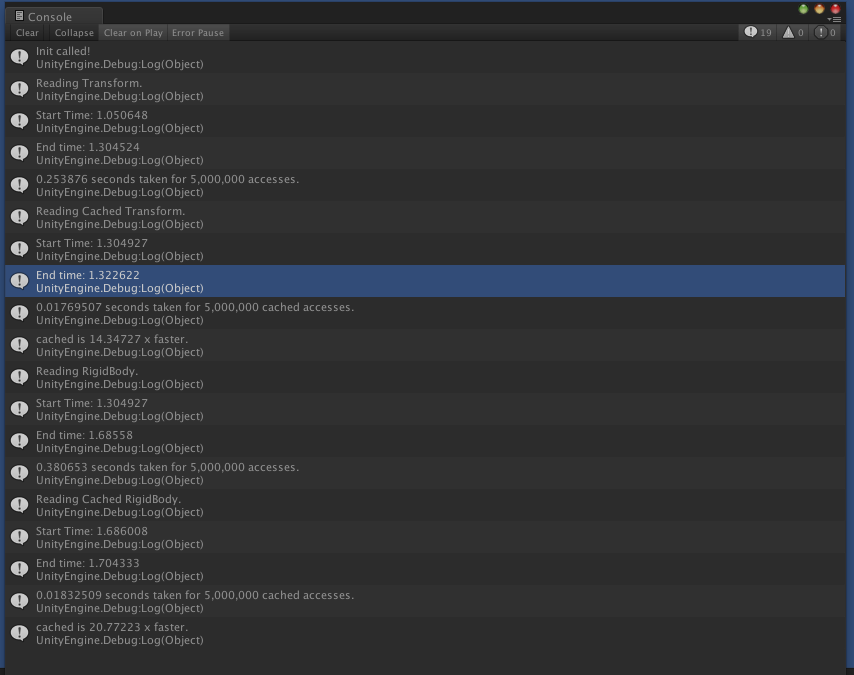I thought I owed it to everybody involved to write a post updating everybody on the state of play regarding Red Forest- It’s clearly still not out- but why? This will read as a sort of post-mortem, but I’ve not let the game die. Read on.
When I started Red Forest, it was a new pod racer, with no competition. People were asking for one, and I decided to cobble a prototype together. That would have been in May 2013 or so.
Truth be told, Code for Red Forest goes as far back as a 2003 prototype I made for a different game. The main pod was actually made by a fellow artist of mine, Adrian Tysoe, going on 12 years ago now. I loved that pod, and so with his permission I put it in the first build. At this point, the prototype actually contained 64-pod races and an actual Red Forest, with physics that really gripped you. I would play this for hours!
“OK, nice! This is doable!” I said. And I set off.
Before I go further, I need to explain something I’ve always kept under wraps. Money. It’s not like me to talk about personal things here, because for the most part, there’s no reason to. An ex of mine had been taking out loans- and I had been signing my name on them (Yes, this was pretty dumb and not something you’ll ever see me do again). This needed clearing, and it took a long time. This prevented me from securing funds for the game, and so I needed to build this game with the cash I had available.
Bare in mind I had £13,000 of debt, and I earned around £17,000 a year, I was pretty stuck. Development was always going to be slow.
The next thing I did not anticipate, despite my experience, is that development would slow as time went on. I got in touch with friends- fellow developers and experts, to get things moving. Alex for artwork, and Hazel for User Experience. This was going to be around Sept 2013.
It then became obvious that the original design specs I wrote for the game were nowhere near satisfactory. So, Alex and I sat down and started to go through them. At the same time, I worked on moving the game from Javascript to C#. This would result in cleaner code (as I would refactor as I went) and a document.
Except despite being very aware of feature creep, and saying we would not let it happen, the goal posts moved so quickly week-to-week that the document never stayed accurate. As any experienced developer would tell you- Stick to your design document, don’t add new features- and don’t rewrite it to fit your just-thought-up-features. At this point there was no point in the design document. At all.
Eventually this ended up in me letting the UX expert down. She does some awesome things- but we were ultimately unable to work together on Red Forest. (We did work together a little on another project, Gravity Ed, but ultimately players did not enjoy the game I had designed, so I bought it to an end early.) Most of the problem here was that I was unable to clearly provide what they needed to get their job done. It led to a lot of wasted time.
During the refactor, I wrote a mesh generation system that is incredibly powerful. It allowed for runtime creation of paths and tracks. Great! Useful for procedural path generation and track editors! Something very important happened here, something I would not realise for another 2 years.
The game was now flexible. It had procedural track generation using a prefab-like system to define individual parts that would merge together. The tracks could loop-the-loop and twist upside down. Sounds great, right?
Except it isn’t. At this point, so much is happening you can’t identify the track- There’s nothing to make you think “Oh, it’s THAT track!” where the simpler track generators had character but didn’t invert.
At the same time, we were getting feedback that the controls were too difficult. Specifically, the handling. Why? Well, I had designed the handling to be twitch-based. This meant you really felt like you were piloting those pods. This is great for hardcore gamers, but most of the players I had in front of the game just couldn’t handle it. It required too much time to get used to. So it was replaced with a bog standard “Follow the path” handling system that feels more like Wipeout/F-Zero. Very important issue number 2 happens here: The pod character is now destroyed.
Suddenly, the game, despite all of it’s technological achievements for just the one developer, has lost it’s character. It’s no longer what I envisioned.
And you can see the big problem: If the game is not what I wanted to create, then I’m going to doubt every step.
So now forward to 2016. I’m still wondering why the game has lost it’s character, and Alex is suffering from a mix between “It’s not perfect so you can’t have it!” and “Sorry dude, Life’s a bit meh at the moment.” – Remember, this project has long run out of budget, so he’s getting no cash- I can’t complain about the situation and I feel for him. He needs to make cash, so he takes on other work. That’s OK. We both want to see this stuff finished though, so I go looking for help. Three students. That lasted about 2 weeks- I never successfully got any work done that way, and the project effectively stalled.
Since 2013, other Pod racers were announced. Good ones. With budgets. With artists. With better managed development cycles. It shows. And it’s a kick to some very sensitive body parts. (Go play them, they’re good games!)
At this point I had taken on a new full-time employment contract and was expecting the birth of my daughter Sophie. You can tell what’s coming- With a little one, there’s no time for hobby development. And that’s where we are today! For me, family comes first. Everything I do is for them, so they get my time as a priority. Second, is any current contracts I hold, and third, is this hobby.
The game still exists. It’s on Bitbucket. It’s hidden, but exists, in Steam (It was Greenlit). What do we do?
It just isn’t the game I originally envisioned anymore.
Don’t get me wrong- It’s still fun. I’m still proud of what we developed. For one developer and one artist, with no budget, it’s an epic project. Right now it sits needing two things: the UI is 90% of the way through a renovation, and the tournament is currently broken due to rule changes.
I’m very tempted to tidy it up and release it on Steam for free as-is. After all, it deserves to be out there.
Alternatively, I could open-source it. This is difficult as there are many asset-store assets still in use that we never got around to removing- but if I remove them, and turn it into a basic project, who knows- A new, up-and-coming developer might be able to take it and run, turning it into the game it deserves to be?
Or, I could make attempts to turn it into something that more closely matches what I wanted. This actually involves REMOVING features. I would remove the variations in the tracks so there’s some character again. It would still be very cheap- I may even drop it to free- because of all the features I promised, all of which I could absolutely deliver with the right artwork, I actually managed to deliver very few.
With Steam Greenlight sunsetting, I’ve not got a lot of time left to get this game switched on, but if it’s going to happen, it has to happen now.
Red Forest felt “Complete” a few times. I have great memories of taking part in a tournament just to upgrade my pod, then having to adjust my play style because I’d assigned too many power-ups to my top speed and not enough to my handling. I’d get a new pod then forget to balance my power, so I handled really well but kept getting taken out on the straights. Then, I’d perfect it and start drifting around the tracks.
Don’t get me wrong, I’m still incredibly proud of what we built. Over the years I’ve been asked many times where Red Forest is- it’s become a bit of a joke among my friends. Hopefully this post may help other developers avoid the same pitfalls we did.
First, do what you can with your budget. We did this with no budget and had no choice! If you have the option of a budget, use it. Do not be afraid to spend money to make your game what you envision.
Second, for the love of god, get over feature creep. And then get over it again, because it’ll still be happening when you think you’re over it.
Third, stop doubting yourself. Do market research and listen to that, not your own doubts. Red Forest gets a lot of positive attention. Gravity Ed did not- so I killed Gravity Ed and worked on Red Forest. Some of the research for Red Forest did change the game a little from what I originally wanted, but that can be managed. (In my case, I could have let the player select the two handling types.)
As I sign off, I’d like to thank you all. Thanks for the support. Thanks to the few fans (there were 4,000 players on Android a little while ago. Specific thank you to the reviewer who thinks I have “nice balls”). Thank you to those who helped along the way (Alex, Hazel, ‘The Latvians’, anybody else I can’t recall right now!). Thanks to those who provided feedback.
Mostly, thanks to my Wife Nicola, who has put up with everything since meeting me. You poor, poor thing you.


